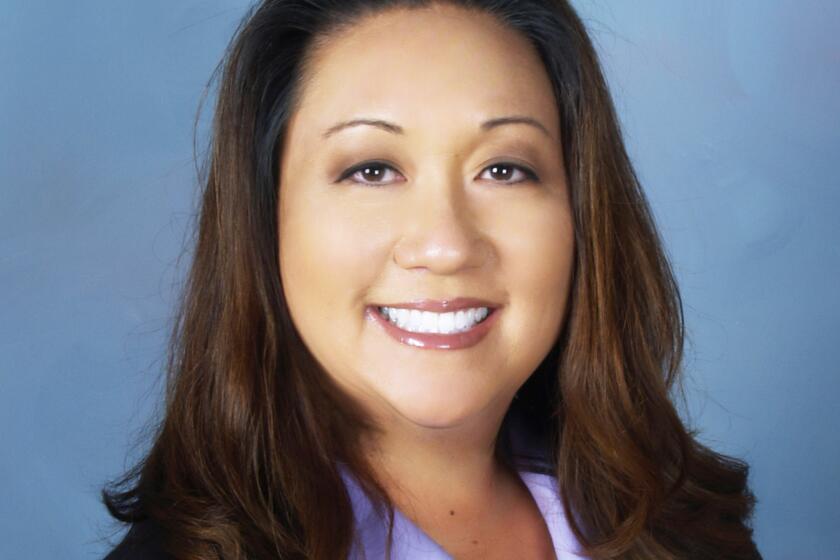Common Core challenges schools
Back-to-school season is here, and it’s all about the Common Core this year.
California’s new academic standards formally go into effect, bringing big changes, some confusion and a new brand of teaching to the classroom — from kindergarten through high school.
So what is the Common Core?
By now, most people (65 percent of public school parents and 56 percent of all Californians) know something about the state’s new academic standards, according to a spring survey by the Public Policy Institute of California.
The Common Core guidelines — developed by a nationwide consortium of educators and other officials — are designed to emphasize critical-thinking skills over rote memorization and better prepare students for college and careers.
Parents and teachers have raised questions about whether these big academic changes are moving too quickly and whether schools are prepared for the shift. The first round of formal testing tied to the standards will be administered in the spring.
Throughout San Diego County, some schools and districts have been using the new standards to guide curriculum for nearly four years, while others are still in the early stages, said Scott Sypkens, who is overseeing Common Core teacher training efforts for the San Diego County Office of Education.
“Making a full transition to the standards will require a lot of adult learning,” he said. “Our primary role in all of this is to help the adults in the schools to lead the work so the instruction is reflective in the rigor that’s required in the Common Core.”
Middle and high school math classes will see some of the most dramatic changes under the new standards — to the point that parents may not recognize the classes by name.
Districts had the option of keeping some familiar course titles — pre-algebra, algebra, geometry and the like — while still changing the curriculum so it reflects Common Core; or it could rename courses to something similar to “Integrated Math I, II or III” to reflect changes that include stretching the concepts of algebra over four years of high school.
Among the biggest parent concerns is that their children will not have the opportunity to take calculus in high school, typically the fourth year of math expected of students vying to attend top universities.
“You take the word ‘algebra’ out of the course name and parents worry that their children are not going to be challenged,” said Jim Solo, executive director of leadership and learning for the San Diego Unified School District. “The coursework is extremely rigorous.”
Like many other districts, San Diego Unified established a middle school math track for advanced math students, and another standard one for those whose achievement levels are at grade-level. Either way, students will have a chance to enroll in calculus in high school, Solo said.
Common Core will also drive changes in English, history and other classes. Nonfiction will be stressed over fiction, accounting for half of classroom reading in the earliest grades and growing to 70 percent by high school.
Some parents worry that nonfiction — perhaps with a social agenda — will overshadow fiction and push out the classics.
“I want my sons to be ready for college and a good job some day. But I don’t want them to be worker robots. I want them to read Gatsby and Shakespeare,” said Mary Gonzalez, a parent advocate whose two sons attend school in the South Bay.
Regardless of what students read, they will be charged with analyzing the text and developing strong opinions on its structure and purpose.
Educators say traditional essays and poetry lessons will live on. However, the new standards stress scientific reports, editorials and other forms of nonfiction. Analytical writing that might be useful in college or the workplace will also be pushed more heavily in schools.
Schools throughout the state and region have piloted new tests designed to measure how well students are learning under the new standards. The first formal round of testing will be administered in the spring with results to be published in the summer.
The new tests will be administered on computers, tablets and other devices and no longer rely on multiple-choice bubble-in Scantron sheets. Although some districts and schools reported problems with bandwidth and access to devices during trial tests, the vast majority of schools pulled off the tests without major technology problems, said Greg Ottinger of the San Diego County Office of Education.
The Common Core has become increasingly political in other states among tea party groups and conservatives. Of the 45 states (and the District of Columbia) that adopted Common Core, Oklahoma and Indiana have abandoned the standards. North Carolina, Missouri and South Carolina are reviewing the academic guidelines while they are being used in schools. Last week, Florida’s Lee County school system became the first in the nation to opt out the standardized tests linked to Common Core.
Californians have been more accepting of the public school reform effort. Results from the PPIC poll released in April show that 69 percent of Californians were in favor of the standards, 22 percent were opposed, and 10 percent were unsure. Views among public school parents were similar (72% favor, 20% oppose, 8% didn’t know). Solid majorities of adults across parties favored Common Core, the survey showed.
Even so, parents and teachers here have raised concern about the speed of change.
Rumor and speculation over exactly what the standards will mean to schools are so widespread that State Superintendent of Public Education Tom Torlakson has issued a “common core tool kit” to districts to help them dispel myths and educate families.
“Now educators have additional help in dispelling the mystery and concerns of families about this transition,” Torlakson said when issuing the materials last month
Some schools have started to remind parents about Common Core in back-to-school literature. According to the PPIC study, that might be a good idea.
Among public school parents, a slim majority (53%) said their child’s school or district has provided them with information about Common Core, with 37 percent saying that the information is adequately helping them understand how the standards will affect their child (16% need more information; 43% report receiving no information).
Three-quarters of adults (75%) were very concerned (37%) or somewhat concerned (38%) that teachers are not adequately prepared to implement Common Core. Among public school parents, 80 percent were at least somewhat concerned.
Get Essential San Diego, weekday mornings
Get top headlines from the Union-Tribune in your inbox weekday mornings, including top news, local, sports, business, entertainment and opinion.
You may occasionally receive promotional content from the San Diego Union-Tribune.




